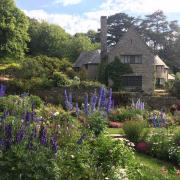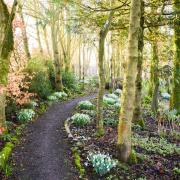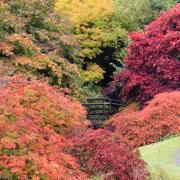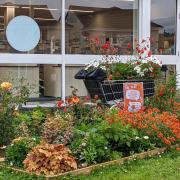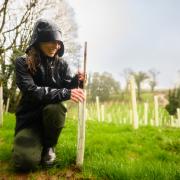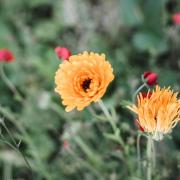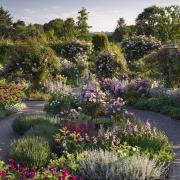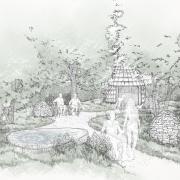It might not be traditionally regarded as the best of months for gardeners, but if you look closely GILL HEAVENS still finds plenty of interest in January
January is the longest month. The excited anticipation of Christmas has passed and, although the shortest day is long gone and we are marching decisively towards spring, we seem even more entrenched in winter.
After the excesses of the festive period most gardeners are itching to get back outside but it can be hard to step back out into the dank gloom. There are, however, many gems which grace our gardens at the beginning of the year and these will hopefully entice us back outside again to enjoy their understated splendour.
Evergreen shrubs and trees come into their own when their herbaceous room mates are sleeping and these come in a variety of shapes, sizes and colours, giving structure to the snoozing garden. One of my favourites is Yucca filamentosa, also known as Adam’s needle. It has glaucous sword-like leaves tipped with a vicious claw, these leaves swirl mathematically outwards and in doing so appear to be unravelling, like a fraying jumper.
Another strappy-leaved beauty is Astelia chathamica or Silver Spear, the shining foliage has truly silver undersides which they turn upwards for our delight. An unusual shrub or small tree is Trochodendron aralioides, which comes from the mountainous regions of Japan, Korea and Taiwan. It has glossy green leaves arranged in whirls, giving it its common name of Wheel Tree and has an aromatic bark and, although it can reach 20m, is very slow growing. The variegated myrtle, Myrtus communis Variegata, is another attractive shrub which provides important winter interest, fading into the background until late summer when its potently perfumed flowers emerge.
Although this is not a floriferous month any flowers that grace our gardens are all the more appreciated. There are of course the ubiquitous snowdrops and early daffodils, and I would be the first to praise them, but there are others blossoming now.
We cannot talk about deep winter flowers without mentioning the camellia, a great favourite in the acid soils of Devon and Cornwall. Their natural habitat is woodland and they thrive in sheltered semi-shade, producing flowers in a large range of colours and forms over many weeks.
Vinca difformis, commonly known as the Intermediate Periwinkle, starts flowering in October and will continue unabashed until spring. It is however in the depths of the darkest season that it seems to shine the brightest; illuminating the murkiest corners of the garden with its plethora of elegantly unfurling flowers, white with a hint of blue. We mustn’t forget the viola; a perfect combination of delicacy and toughness. They will self-seed wherever they fancy, sometimes in unexpected places, and brighten the gloomiest of days.
January also seems to be a period of phenomenal fragrance in the garden. Daphne bholua “Jacqueline Postil” has really got everything going for it, she is the belle of this season’s ball, the girl who has everything; evergreen foliage, pretty pink flowers and exquisite scent. Another stunningly fragrant January bloomer is Clematis armandii, with ubiquitous blooms throughout the winter. As a bonus it even pops open the odd flower throughout the rest of the year.
The witch hazels, both Hamemelis mollis and Hamemelis x intermedia, will produced their spicily scented spider-like flowers on bare branches in January. Furthermore, the sweetly scented Winter Flowering Honeysuckle, Lonicera x purpusii, is now at its peak with its delicate creamy flowers and prominent yellow anthers.
The garden at this time of year is not quite the barren wasteland we might imagine; there are many plants that shine whilst most are resting. They tend not to be the show stoppers of high summer, more often a subtle beauty, enhancing the dark days of January. They are more than enough to tempt us out into the garden once more, to admire their beauty and inspire us to prepare for spring!








